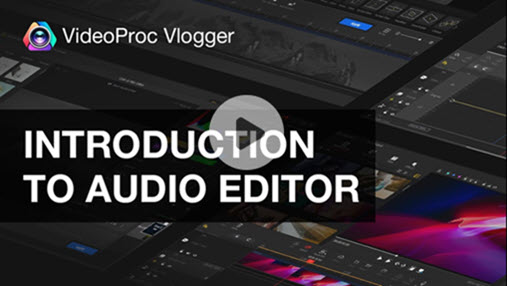So, you've decided to embark on the journey of recording music at home. Congratulations! Whether you're an aspiring musician, a hobbyist, or simply someone who wants to express themselves creatively, recording music at home can be a rewarding and fulfilling experience.
But where do you begin? What equipment do you need? And how do you ensure that your recordings sound professional? Don't worry, we've got you covered. In this complete guide for beginners, we'll walk you through everything you need to know to start recording music at home.
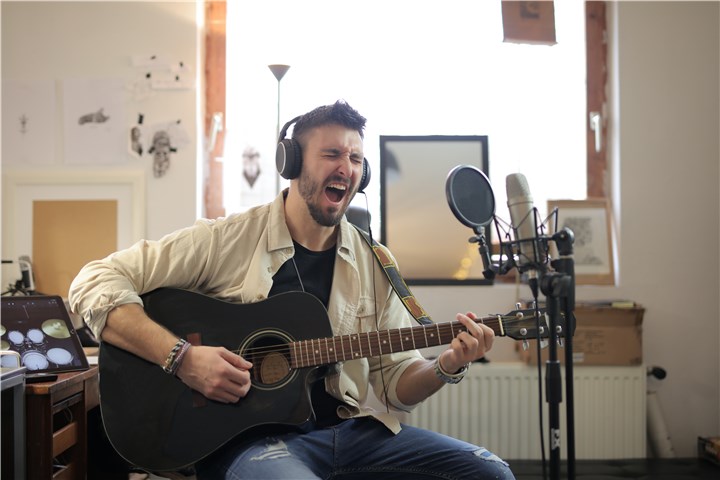
How to Set Up a Home Recording Studio
Setting up a home recording studio can be an exciting and rewarding endeavor. Whether you're a musician, podcaster, or aspiring audio engineer, having your own studio allows you to create professional-quality recordings from the comfort of your own home. In this guide, we'll walk you through the essential equipment and software you need to get started, as well as provide some tips on how to set up your space for optimal sound quality.
First things first, let's talk about what a home recording studio is and why you might want one. A home recording studio is a space where you can record, edit, and mix audio tracks. It allows you to have complete control over the recording process, from capturing your vocals or instruments to adding effects and mixing the final product. Having a home studio gives you the freedom to work at your own pace and experiment with different sounds without the time and financial constraints of booking a professional studio.
Now, let's dive into the essential equipment and software you'll need for your home recording studio:
What Equipment and Software Recording Music at Home Needs
Computer or Laptop: You'll need a computer or laptop with enough storage space and processing power to handle the demands of recording and editing audio. Look for a device with a fast processor, ample RAM, and a large hard drive or solid-state drive (SSD).
Digital Audio Workstation (DAW) Software: A DAW is the heart of your home recording studio. It's the software that allows you to record, edit, and mix audio tracks. There are many DAW options available, ranging from free to professional-grade. Some popular choices include Pro Tools, Logic Pro, Ableton Live, and FL Studio.
Microphone and Microphone Stand: A high-quality microphone is essential for capturing clear and accurate vocals and instruments. Consider your recording needs and budget when choosing a microphone. Popular options include the Shure SM58 for vocals and the Audio-Technica AT2020 for a versatile condenser microphone. Don't forget to invest in a sturdy microphone stand to position the mic correctly.
Headphones or Speakers: You'll need a reliable pair of headphones or speakers to monitor your recordings and mixes. Look for headphones or speakers that deliver high-quality sound without distortion or feedback. Some popular options include the Audio-Technica ATH-M50x headphones and the Presonus Eris E3.5 studio monitors.
Audio Interface: An audio interface is a device that connects your microphone and other audio devices to your computer and converts analog signals to digital ones. It's crucial for achieving professional-quality recordings. Focusrite Scarlett and PreSonus AudioBox are popular audio interface brands known for their reliability and sound quality.
MIDI Keyboard or Controller: If you plan on using virtual instruments or triggering samples in your recordings, a MIDI keyboard or controller is a must. It allows you to play and control virtual instruments using a piano-style keyboard. Novation Launchkey and Akai MPK Mini are popular options for MIDI keyboards and controllers.
Cables, Adapters, and Accessories: Don't forget to stock up on cables, adapters, pop filters, shock mounts, and other accessories that can enhance your sound quality and reduce noise. Invest in high-quality cables and adapters to ensure a reliable connection between your devices.
Now that you know the essential equipment and software, how do you choose the best options for your needs, budget, and preferences? Here are some tips to help you make informed decisions:
1.Consider Your Recording Needs: Think about the type of music you want to record, the number of tracks you want to work with, and the level of complexity you want to achieve. This will help you determine the necessary capabilities and features of your equipment and software.
2.Do Your Research: Read user reviews, watch tutorials, and try demos before making any purchases. This will give you a better understanding of the pros and cons of different products and help you make an informed decision.
3.Look for Compatibility and Durability: Ensure that your equipment and software are compatible with your computer's operating system. Also, consider the durability of the products and the warranty and customer support offered by the manufacturers.
These are just very basic tips for you to choose the essential equipment for recording a song at home, and may be not very specific. So here I will take how to choose a microphone as an example and you may learn something from it.
How to Choose the Best Microphone for Your Vocals or Instruments
1. Understanding Microphones: How They Work
Before we dive into the different types of microphones, let's take a brief look at how they work. A microphone is a device that converts sound waves into electrical signals, which can then be amplified, recorded, or transmitted. The key components of a microphone include a diaphragm, a coil or capacitor, and a magnet. When sound waves hit the diaphragm, it vibrates and creates electrical signals that correspond to the sound.
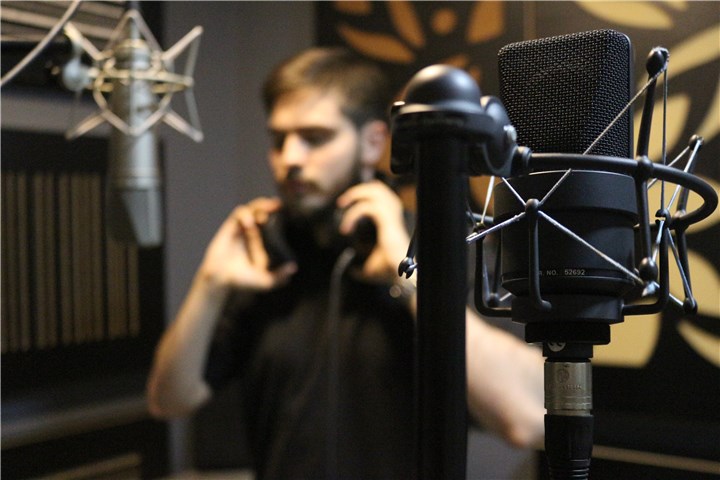
Types of Microphones for Recording Vocals or Instruments
1.Dynamic Microphones
Dynamic microphones are a popular choice for recording vocals and instruments at home. They are known for their durability, versatility, and affordability. Dynamic microphones can handle high sound pressure levels and are less sensitive to background noise. However, they have a limited frequency response and sensitivity compared to other types of microphones. Popular dynamic microphones for home recording include the Shure SM58 and the Audio-Technica ATR2100x.
2.Condenser Microphones
Condenser microphones are highly sensitive and accurate, making them ideal for capturing vocals and instruments with a lot of detail. They require phantom power, which is usually provided by an audio interface or mixer. Condenser microphones can produce a more natural and transparent sound compared to dynamic microphones. However, they are more prone to noise and distortion. Popular condenser microphones for home recording include the Audio-Technica AT2020 and the Rode NT1.
3.Ribbon Microphones
Ribbon microphones offer a warm, smooth, and natural sound. They are often used to capture vocals, string instruments, and brass instruments. Ribbon microphones have a unique design that uses a thin metal ribbon as the diaphragm. While they deliver excellent sound quality, they are fragile, expensive, and have a lower output compared to dynamic and condenser microphones. Popular ribbon microphones for home recording include the Royer R-121 and the AEA R84.
2. Choosing the Best Microphone for Your Needs
Now that you have an understanding of the different types of microphones, here are some tips to help you choose the best one for your needs:
Consider the sound source: Think about what you'll be recording and the characteristics of the sound you want to capture. Different microphones excel at capturing different types of sound, so choose one that complements the source.
Evaluate the recording environment: Take into account the acoustics of your recording space. Some microphones are more forgiving of room reflections and background noise than others. Consider whether you'll be recording in a treated studio or a less controlled environment.
Determine your desired sound quality and character: Microphones have different tonal characteristics that can affect the sound of your recordings. Do you prefer a bright and detailed sound, or a warmer and more vintage tone? Research and listen to samples to find a microphone that matches your preferences.
Read user reviews and watch tutorials: Take advantage of the wealth of information available online. Read user reviews, watch tutorials, and listen to audio samples of the microphones you're interested in. This will give you a better idea of how they perform in real-world recording situations.
Consider compatibility, durability, warranty, and customer support: Ensure that the microphone you choose is compatible with your recording setup. Check for compatibility with your audio interface or mixer. Also, consider the durability of the microphone, the warranty offered by the manufacturer, and the availability of customer support.
Now that you have your equipment and software sorted, it's time to set up your home recording studio. Here are some tips to create a suitable space for your studio:
Choose a Quiet and Isolated Room: Select a room that is quiet, isolated, and comfortable to work in. Avoid rooms with windows, doors, vents, fans, or other sources of noise or vibration that can interfere with your recordings.
Use Acoustic Treatment: Improve the sound quality in your room by using acoustic treatment materials such as foam panels, blankets, carpets, or curtains. These materials help reduce echoes and reverberations, creating a more controlled recording environment.
Arrange Your Equipment Efficiently: Set up your equipment in an ergonomic and efficient way that allows you to access everything easily. Avoid clutter and tangled wires by organizing cables and keeping your workspace clean.
How to Prepare for a Recording Session
1. Choose the Right Song
The first step in preparing for a recording session is choosing the right song to record. You can either write an original song or record a cover of someone else's song. Whichever you choose, make sure it resonates with you and showcases your unique style and talent. Consider the mood, theme, and genre of the song and how it aligns with your artistic vision.
2. Craft Memorable Lyrics
Once you've chosen a song, it's time to write lyrics that match the mood, theme, and style of your song. Use rhyme schemes, metaphors, hooks, or other techniques to make your lyrics catchy and memorable. Take the time to brainstorm ideas, experiment with different word choices, and refine your lyrics until they convey the message you want to share with your audience.
3. Arrange Instruments for Harmony
To create a well-rounded and dynamic song, it's important to arrange instruments that complement your vocals. Think about the harmony, melody, rhythm, and texture you want to achieve. Consider using chord progressions, scales, modes, or other musical concepts to structure your song and create a cohesive sound. Experiment with different instrument combinations to find the perfect balance.
4. Rehearse, Rehearse, Rehearse
Rehearsing your song is key to delivering a confident and compelling performance. Use tools like a metronome, tuner, or recorder to practice your timing, pitch, tone, and expression. Pay attention to the dynamics of the song and practice building up to climactic moments or creating subtle nuances. The more you rehearse, the more comfortable and polished your performance will be.
Tips to Improve Your Skills and Creativity
In addition to preparing for a recording session, it's important to continuously improve your skills and nurture your creativity as a musician. Here are a few tips to help you on your journey:
Listen to Different Genres: Expand your musical horizons by listening to a wide range of genres. Analyze how songs are composed, recorded, and produced in different styles. This will help you develop a deeper understanding of music and inspire your own creative process.
Learn from Other Musicians: Seek inspiration from other musicians who have recorded music at home. Watch their videos, read their blogs, or join their communities online or offline. Learn from their experiences, techniques, and challenges to enhance your own recording skills.
Experiment with Sounds and Techniques: Don't be afraid to step outside your comfort zone and experiment with different sounds, styles, and techniques. Use loops, samples, effects, or plugins in your digital audio workstation (DAW) software to add depth and creativity to your recordings. Embrace innovation and let your imagination run wild.
How to Record Vocals and Instruments at Home
Recording vocals and instruments at home can be a fun and rewarding experience, allowing you to unleash your creativity and capture your musical ideas.
6 Steps to Record Vocals at Home
1. Set up your microphone and audio interface
To get started, you'll need a microphone and an audio interface. Set them up according to the instructions and specifications of your devices and software. Make sure to position the microphone correctly to capture the best sound quality.
2. Adjust the input level, gain, and volume
Before you start recording, adjust the input level, gain, and volume of your microphone and audio interface. This will help you avoid clipping, distortion, or feedback. Experiment with different settings to find the optimal levels for your recording.
3. Choose a suitable recording mode, format, and quality in your DAW software
Your digital audio workstation (DAW) software will allow you to choose a recording mode, format, and quality. Select options such as mono or stereo, WAV or MP3, and 44.1 kHz or 48 kHz, depending on your preferences and the requirements of your project.
4. Test your microphone and audio interface
Before you start recording your vocals, it's important to test your microphone and audio interface. Record a short sample of your voice and listen to it back. This will help you ensure that everything is working properly and that you're getting the desired sound.
5. Record your vocals in multiple takes
To achieve the best results, it's often necessary to record your vocals in multiple takes. This allows you to experiment with different techniques and tips to improve your performance. For example, you can focus on singing with proper posture, breathing, and articulation to avoid strain, fatigue, or injury. You can also try singing with emotion, expression, and dynamics to convey the message and mood of your song.
6. Use accessories to enhance your recordings
To improve the quality of your vocal recordings, consider using accessories such as a pop filter, shock mount, or windscreen. These can help reduce plosives, sibilance, or noise in your recordings, resulting in cleaner and clearer vocals. Additionally, make sure to use a headphone mix that allows you to hear yourself and the backing track clearly and comfortably.
6 Steps to Record Instruments at Home
1. Set up your instrument and audio interface
Just like with vocals, you'll need to set up your instrument and audio interface. Follow the instructions and specifications of your devices and software to ensure proper setup. Take the time to tune your instrument and position it correctly for optimal sound capture.
2. Adjust the input level, gain, and volume
Adjust the input level, gain, and volume of your instrument and audio interface to avoid clipping, distortion, or feedback. This step is crucial for achieving a clean and balanced sound during recording.
3. Choose a suitable recording mode, format, and quality in your DAW software
Select the appropriate recording mode, format, and quality in your DAW software. Consider factors such as mono or stereo, WAV or MP3, and 44.1 kHz or 48 kHz, based on your preferences and the requirements of your project.
4. Test your instrument and audio interface
Before you start recording your instrument, it's essential to test your setup. Record a short sample of your sound and listen to it back. This will help you ensure that everything is working correctly and that you're capturing the desired sound.
5. Record your instrument in multiple takes
To achieve the best results when recording instruments, consider recording in multiple takes. This allows you to experiment with different techniques and tips to improve your performance. For example, focus on playing with proper posture, technique, and tuning to avoid errors, mistakes, or damage. You can also try playing with expression, dynamics, and articulation to create interest and variation in your sound.
6. Use a headphone mix and click track
Similar to recording vocals, using a headphone mix that allows you to hear yourself and the backing track clearly and comfortably is crucial when recording instruments. Additionally, consider using a click track or metronome to keep your tempo and rhythm consistent and accurate.
Common Problems and Solutions
Recording vocals and instruments at home can come with its fair share of challenges. Here are some common problems you may encounter and how to address them:
Background noise and interference: To reduce background noise from external sources, such as traffic, neighbors, or pets, consider using soundproofing techniques or recording during quieter times of the day.
Timing or pitch errors: If you notice timing or pitch errors in your recordings, you can use tools such as quantization, time-stretching, or pitch correction in your DAW software to fix them.
Layering and overdubbing: To create harmony, depth, or complexity in your song, consider layering or overdubbing multiple tracks of vocals or instruments. Use tools such as panning, volume automation, or group tracks in your DAW software to achieve the desired effect.
Bonus Tip: How to Record Acoustic Music at Home
Acoustic music refers to music that is created using non-electric instruments or vocals, relying solely on the natural sound produced. Whether you're recording a guitar, piano, violin, or flute, capturing the true essence of the instrument can be tricky, so here comes this part for you. Keep reading and check the steps below.
Step 1. Choose the right microphone and placement: The first step in recording acoustic music is selecting the appropriate microphone for the instrument or voice you're recording. There are different types of microphones with various polar patterns, such as cardioid, omnidirectional, or bidirectional. Experiment with different placements, such as close, distant, or stereo positions, to find the best sound for your recording.
Step 2. Treat your room acoustically: One of the challenges of recording acoustic music at home is dealing with unwanted reflections, reverberations, or noises in your recording space. To minimize these issues, you can acoustically treat your room. Use materials like foam panels, blankets, carpets, or curtains to absorb or diffuse sound reflections, creating a more controlled recording environment.
Step 3. Isolate your sound source: Another factor to consider is isolating your sound source from external sources of interference, such as traffic, neighbors, or pets. This can be achieved by using barriers like closing doors and windows, or using headphones to monitor your recordings. By reducing external noises, you can achieve cleaner and more focused recordings.
Now that we've covered the basic steps, let's dive into some specific tips for different types of acoustic instruments:
Guitar: When recording a guitar, place the microphone around the 12th fret for a balanced tone or near the soundhole for a richer, bass-heavy sound. Experiment with different microphone positions to find the sweet spot that captures the desired sound.
Piano: To record a piano, position the microphone near the hammers for a brighter sound or near the soundboard for a warmer, more resonant tone. You may also consider using multiple microphones to capture the full range of the piano.
Violin: When recording a violin, place the microphone about a foot away from the instrument to capture the natural sound. Experiment with different angles and distances to find the best position that captures the violin's unique characteristics.
Flute: Position the microphone slightly above and in front of the flute to capture the full range of sound. Experiment with different distances and angles to achieve the desired tone and clarity.
Tips to Improve the Sound Quality and Character
- Properly tune your instrument before recording to avoid any intonation problems or tuning drifts that may affect the overall quality of your recording.
- Play with expression, dynamics, and articulation to create interest and variation in your sound. Experiment with different playing techniques to bring out the unique qualities of your instrument.
- Use a pop filter, shock mount, or windscreen to reduce plosives, sibilance, or noise in your recordings. These accessories can help improve the clarity and overall quality of your recordings.
How to Edit and Mix Your Recordings at Home
Editing and mixing your recordings at home is essential for enhancing the quality and appeal of your music. In this part, we'll walk you through the steps you need to follow to edit and mix your recordings like a pro.
4 Steps to Editing Music Recordings
Step 1. Import and Organize Your Recordings
The first step in editing your recordings is to import them into your digital audio workstation (DAW) software. Once imported, organize your recordings into separate tracks according to their type, role, or function. This will make it easier to work with and manipulate individual elements of your music.
Step 2. Trim, Cut, Copy, Paste, and Delete
Now that your recordings are organized, it's time to start editing. Use the editing tools in your DAW software to trim, cut, copy, paste, and delete parts of your recordings as needed. This allows you to remove any unwanted sections, adjust lengths, rearrange orders, or create variations in your music.
Step 3. Normalize, Fade In, Fade Out, Crossfade, and Loop
To ensure a balanced and smooth listening experience, consider normalizing, fading in, fading out, crossfading, or looping your recordings. Normalization adjusts the volume levels of your recordings to a consistent level, while fading techniques help smooth transitions between sections and avoid any abrupt changes or clicks. Looping allows you to repeat sections of your music for added emphasis or effect.
Step 4. Add Markers, Labels, Notes, Comments, or Colors
To keep track of different parts, sections, verses, choruses, bridges, intros, outros, and more, consider adding markers, labels, notes, comments, or colors to your recordings. This makes it easier to navigate and identify specific elements within your music during the editing process.
7 Steps to Mix Music Recordings
Step 1. Balance the Volume Levels
Once you've finished editing your recordings, it's time to move on to the mixing stage. Start by balancing the volume levels of each track relative to each other and the overall mix. Use tools such as faders, meters, or gain staging in your DAW software to achieve the desired balance.
Step 2. Pan Your Tracks
To create a sense of space and depth in your mix, pan each track left, right, or center according to their position in the stereo field. Use tools such as knobs, sliders, or automation in your DAW software to control the panning of each track.
Step 3. Equalize Each Track
Equalization is the process of adjusting the frequency spectrum of each track to achieve a desired tonal balance. Use tools such as filters, shelves, or bands in your DAW software to enhance or reduce specific frequencies in each track.
Step 4. Compress Each Track
Compression is a powerful tool for controlling the dynamic range of your recordings. Use tools such as thresholds, ratios, attacks, releases, or knees in your DAW software to compress each track and achieve a more consistent and polished sound.
Step 5. Add Effects
To add depth, character, and interest to your mix, consider adding effects to each track. Reverb, delay, chorus, flanger, phaser, distortion, and modulation are just a few examples of the effects you can use to enhance the sound quality of your recordings. Experiment with different combinations and settings to find the right balance for your music.
Step 6. Group, Bus, or Send Tracks
To process multiple tracks together or separately, consider grouping, bussing, or sending tracks to submixes or auxiliaries. This allows you to apply effects, equalization, or compression to multiple tracks at once, giving you more control over the overall sound of your mix.
Step 7. Master Your Mix
The final step in the editing and mixing process is mastering. Mastering is the process of optimizing the loudness, clarity, and consistency of your mix. Use tools such as limiters, maximizers, enhancers, or analyzers in your DAW software to achieve a professional and polished final result.
Different Genres, Different Approaches
Editing and mixing techniques can vary depending on the genre of music you're working with. For example, rock music may require more aggressive compression and distortion, while pop music may focus on tight vocal harmonies and catchy hooks. Hip hop often incorporates heavy bass and intricate drum patterns, while jazz and classical music emphasize dynamics and space. Check out our tutorials or guides on how to edit and mix different genres to learn more.
Tips for Improving Your Mix Skills and Creativity
To improve your skills and creativity as an editor and mixer at home, consider the following tips:
Listen to reference tracks: Compare your mix with professional or popular songs that are similar to yours. Pay attention to the balance, dynamics, and overall sound of these reference tracks and use them as a guide for your own mix.
Use different sound systems: Check your mix on headphones and speakers to ensure it sounds good on different sound systems and environments. This will help you identify any issues or inconsistencies that may not be apparent on just one system.
Solo and mute tracks: Isolate or eliminate tracks by using the solo and mute buttons in your DAW software. This allows you to focus on specific elements or details in your mix and make adjustments as needed.
A/B testing: Switch between different settings or versions of your mix and evaluate their differences or preferences. This can help you make informed decisions and fine-tune your mix to perfection.
How to Share and Distribute Your Music Online or Offline
Whether you're a budding musician or an established artist, getting your music out there by sharing and distributing your music online or offline is essential for connecting with fans, attracting new listeners, and potentially even landing record deals or licensing opportunities. And in this article, we'll explore the steps you need to follow when sharing and distributing your music, as well as some tips to increase your chances of success.
Step 1. Exporting Your Music in the Right Format
Before you can share your music, you'll need to export your mix as a final audio file in a suitable format, quality, and size for your intended platform or medium. For online streaming or downloading, popular formats include MP3, WAV, or FLAC. If you're planning on physical distribution, such as CDs, DVDs, or vinyl, you'll need to ensure your audio file is in a format accepted by duplication or pressing services.
Step 2. Adding Metadata to Your Audio File
To provide important information about your song, such as title, artist, album, genre, year, or artwork, you'll need to add metadata to your audio file. You can do this using tools such as tags, editors, or converters in your digital audio workstation (DAW) software or online services. Metadata helps listeners identify and organize your music, so make sure to include accurate and relevant information.
Step 3. Uploading Your Music to Online Platforms or Services
Once your audio file is ready, it's time to upload it to online platforms or services that allow you to share, stream, download, or sell your music. Some popular platforms include SoundCloud, Bandcamp, Spotify, Apple Music, YouTube, and Amazon Music. Each platform has different requirements and features, so take the time to familiarize yourself with their guidelines and options. Create accounts, profiles, pages, or channels on these platforms and follow their instructions to upload your music.
Step 4. Promoting Your Music on Social Media Networks and Websites
Sharing your music on online platforms is just the first step. To maximize your reach, you'll need to promote your music on social media networks and websites where you can connect with potential fans, listeners, or customers. Platforms such as Facebook, Instagram, Twitter, Reddit, and Quora provide opportunities to engage with your audience and create a buzz around your music. Use tools such as posts, stories, tweets, comments, or answers to share updates, behind-the-scenes content, live performances, or upcoming releases. Engage with your audience by responding to their feedback, questions, requests, or suggestions.
Examples of Successful Musicians Who Shared and Distributed Their Music
Many successful musicians have started their careers by sharing and distributing their music online or offline. Take artists like Billie Eilish, Ed Sheeran, Justin Bieber, Taylor Swift, or BTS, for example. They all gained popularity and recognition through online platforms, social media, and grassroots efforts. Their stories and interviews can provide valuable insights into how they navigated the music industry and built their fan bases. Check out their stories or interviews to learn more about their journeys.
Tips to Increase Your Chances of Success
While there's no guaranteed formula for success, there are some tips that can increase your chances of finding an audience and gaining popularity.
Firstly, choose a catchy and memorable name for yourself and your music that reflects your personality and style. A unique and appealing image and brand will also help you stand out from the crowd and attract attention.
Additionally, collaborating with other musicians who have similar or complementary genres, styles, or audiences can expand your reach and introduce you to new listeners.
Lastly, always engage with your audience and fans. Respond to their feedback, questions, requests, or suggestions, and make them feel like a part of your journey.
How to Protect Your Music from Piracy or Plagiarism
Understanding Piracy and Plagiarism
Piracy refers to the unauthorized copying, distribution, or sharing of copyrighted material, such as music. It can occur in physical formats, like CDs or vinyl records, as well as in digital formats, such as MP3 files or streaming platforms. Piracy not only affects your ability to earn income from your music but also undermines the value of your work.
Plagiarism, on the other hand, involves using someone else's work without permission and passing it off as your own. This can range from copying melodies or lyrics to using samples without proper credit or clearance. Plagiarism not only diminishes your creativity and originality but also can lead to legal consequences.
6 Steps to Protect Your Music
Step 1. Register Your Music with a Performing Rights Organization (PRO)
A PRO is responsible for collecting royalties on behalf of songwriters and publishers when their music is performed publicly or streamed online. By registering your music with a PRO, such as ASCAP, BMI, or SESAC, you ensure that you receive proper compensation when your music is played on the radio, performed live, or used in films, TV shows, or commercials.
Step 2. Register Your Music with a Mechanical Rights Organization (MRO)
An MRO collects royalties for songwriters and publishers when their music is reproduced physically or digitally. By registering your music with an MRO, such as Harry Fox Agency or Songtrust, you protect your rights and ensure that you receive royalties when your music is sold, streamed, or downloaded.
Step 3. Register Your Music with a Digital Rights Management (DRM) Service
A DRM service uses encryption technology to protect your audio files from unauthorized copying or sharing online. By registering your music with a DRM service, such as Audible Magic or iZotope, you add an extra layer of security to your music and make it more difficult for pirates to distribute your work.
Step 4. Add Metadata to Your Audio Files
Metadata is information embedded within your audio files that provides details about your song, such as the title, artist, album, genre, year, or artwork. Adding metadata helps in identifying and tracking your music, making it easier for legal services and platforms to properly credit and license your work.
Step 5. Add Watermarking to Your Audio Files
Watermarking involves embedding a unique identifier or code in your song that can be detected by special software or devices. Watermarking not only helps in identifying unauthorized copies of your music but also serves as a deterrent for potential pirates.
Step 6. Add Licensing to Your Audio Files
Licensing allows you to specify the terms and conditions of use and distribution of your music. Creative Commons and All Rights Reserved are two common types of licenses. By adding licensing to your audio files, you make it clear how others can use your music, whether it's for commercial purposes, remixes, or non-commercial projects.
Platforms and Services to Help Protect Your Music
CD Baby: CD Baby offers music distribution services and helps you protect your music through their Content ID system, which monitors and manages your music across various platforms.
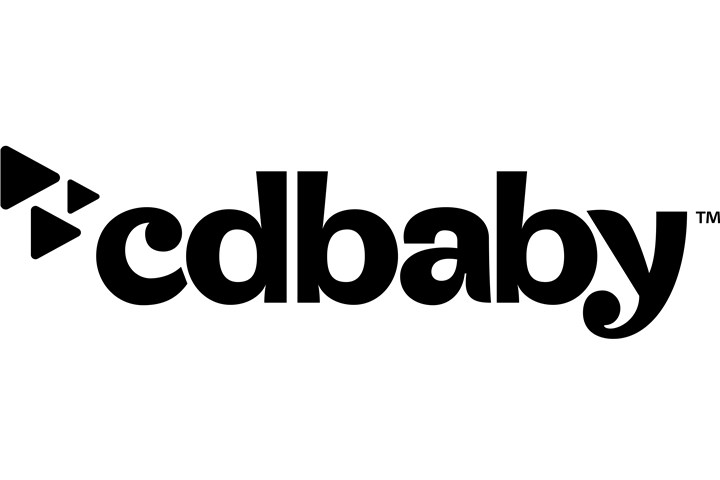
TuneCore: TuneCore provides digital music distribution services and offers tools to help you monitor and protect your music from unauthorized use.

DistroKid: DistroKid is a music distribution platform that also offers content protection features, including automatic YouTube Content ID and Shazam.

SoundExchange: SoundExchange is a digital performance rights organization that collects and distributes royalties for non-interactive digital music streaming services.

Audible Magic: Audible Magic is a content identification and protection service that helps detect and prevent unauthorized use of your music online.
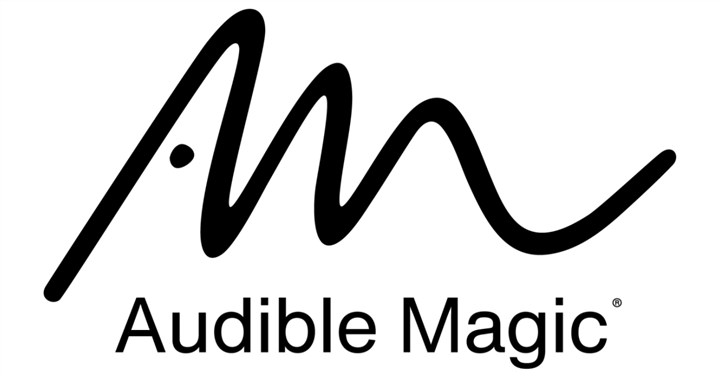
3 Tips for Dealing with Piracy or Plagiarism if They Happen to You
Despite taking preventative measures, piracy or plagiarism can still occur. Here are some tips on how to deal with these issues:
1. Monitor Your Music Online and Offline
Use tools like Google Alerts, Shazam, or Content ID to monitor your music and detect any instances of piracy or plagiarism. Regularly search for your music online and offline to ensure that it's being used appropriately.
2. Report Infringement or Violation
If you discover any instances of piracy or plagiarism, report them to the platform or service where your music is hosted or distributed. They often have mechanisms in place to handle such issues and can take appropriate action.
3. Seek Legal Advice or Assistance
If the infringement or violation persists or becomes more serious, consider seeking legal advice or assistance from a lawyer or an organization that specializes in music rights and disputes. They can guide you through the legal process and help protect your rights.
Conclusion
This is pretty much all information that we have planned to cover in this topic of how to record music at home. Through it, you have learned about how to set up your own home recording studio, what preparations needed for the recording, how to record vocal and instruments, how to edit and mix them, and how to share them online and offline.
Recording music at home is great for aspiring musicians, hobbyists, or anyone who wants to express themselves creatively. And these tips can help you to make it step by step. So why not start trying it now?

